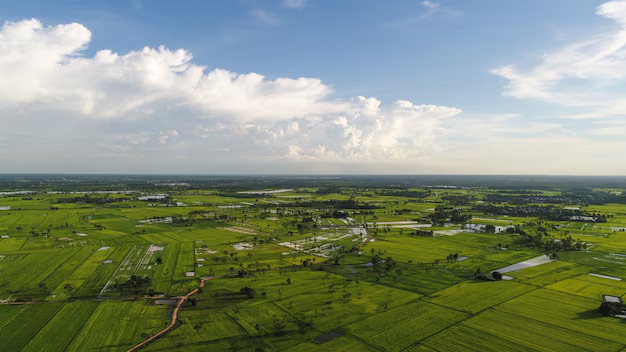The following text is an excerpt from an essay titled “Ceilings on Landholdings” by M.A. Venkata Rao, published in The Indian Libertarian on September 15, 1958.
M.A. Venkata Rao was a prominent thinker and commentator known for his libertarian views on economic and social policies in post-independence India.
In this piece, Rao critically examines the proposed land reforms in India, arguing against the imposition of landholding ceilings and highlighting the broader economic, social, and political implications of these policies. He highlights the ideological underpinnings of the reforms, warning of potential consequences for property rights and democratic governance in India.
This year (1958) marks a crucial turning point for agriculturalists, with significant land reform proposals under consideration in several Southern states, including Kerala, Andhra, and Mysore. These states are following the lead of Bombay, which has already introduced reforms, and Madras is poised to do the same.
It is vital for the future of democracy and stable governance in India that these land reform proposals are discussed thoroughly from all perspectives—economic and social, short-term and long-term, evolutionary and revolutionary. Such discussions should involve people with relevant experience and intellectuals in general, to ensure that any decisions made have the informed consent of thoughtful citizens. After all, democracy fundamentally means governance by consent, and no issue is ever truly settled unless it is settled rightly.
However, it cannot be argued with any reasonable fairness that the official proposals, as formulated in the Planning Commission’s Reports I and II, are designed to secure the agreement of all affected classes. Even if the government secures a majority vote from legislators in the states for these radical and revolutionary proposals, it cannot claim to have honored the spirit of democracy, for their majority would be a coerced one, not a spontaneous one. Many legislators own no land, and those who do own land hope to retain more than the proposed ceiling, citing family size or other reasons. Many have already sold their lands and invested in urban real estate. As a result, these inequitable reforms are likely to pass amidst substantial suppressed resentment, which could add to the existing reservoir of discontent, manifesting in various anti-national uprisings.
A close reading of the Planning Commission’s Reports I and II reveals a clear blueprint for communist land reform—or, more accurately, revolution—toward which these proposals commit the country. Even the first report of 1951 lays down unambiguously that the goal of land reforms is village management with all lands pooled into a single operational unit and managed under the panchayat. The second report of 1956 reiterates this design, aiming to abolish intermediaries, convert tenants into owners, impose ceilings on landholdings, and distribute the reclaimed land along with uncultivated government land to landless tillers and smallholders. Compensation to owners and payments by beneficiaries would be minimal and stretched over 15 to 20 years, with payments to owners made in 20-year government bonds, similar to the treatment of zamindars.
The first thing to understand is that the case of the Southern landowners is not comparable to that of the zamindars under the Permanent Settlement in the Northern States. Unlike the zamindars, who were primarily revenue collectors under state authority, many Southern landowners purchased their lands on the open market for hard cash and have paid land revenue over the years. However, the proposed reforms place both classes of landowners on the same footing, effectively liquidating their property rights for the benefit of the landless laborers and smallholders.
The Kerala Bill, for example, proposes to take away surplus land above a ceiling of 15 acres of wetland or its equivalent in dry land. The Mysore and Andhra proposals set the permissible area based on income, allowing holdings that yield Rs. 5,400 per year, effectively redefining land ownership and pushing the limits of private property rights.
If these proposals are implemented, they could result in a significant seizure of private property by the state, justified on humanitarian grounds. However, such actions raise serious questions about their legality, morality, and constitutional validity. Is it justifiable to dismantle a class of property holders engaged in a critical sector like food production during a time of underproduction?
The Libertarian Movement strongly advocates for the rights of private property within legitimate limits such as fair competition. It recognizes the value of Henry George’s land use principles, which suggest that the state should reclaim unearned capital gains from property owners through resettlement at regular intervals. However, these reforms do not align with George’s ideas, as they destroy property rights of large holders only to create new property rights for smaller ones, without any justification.
Read the complete musing here (pages 3,4, and 8)

